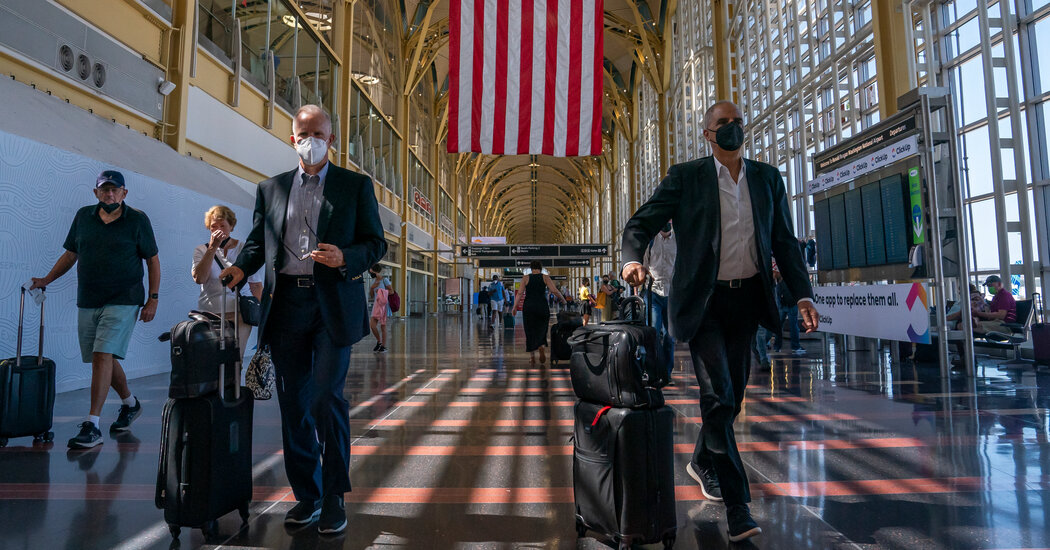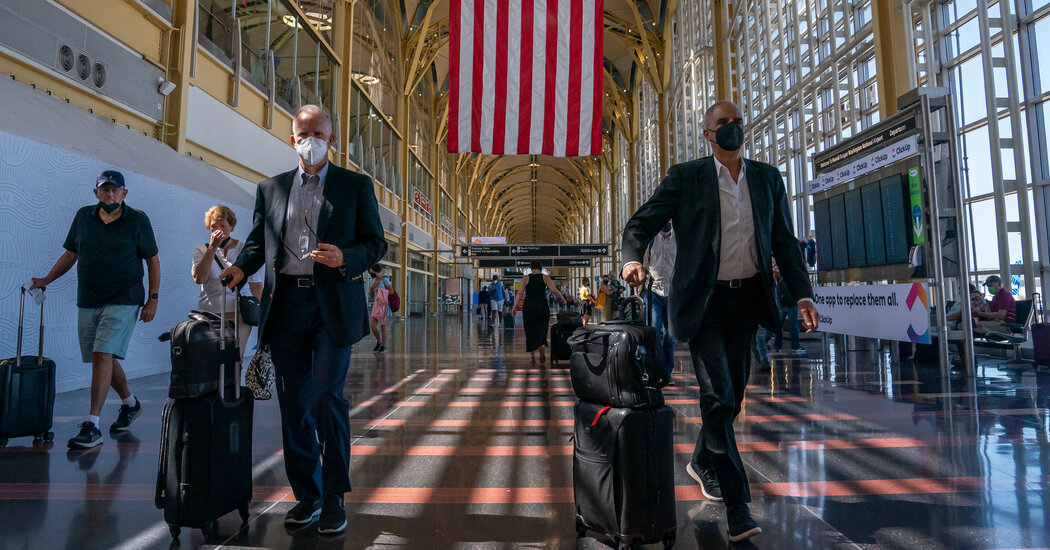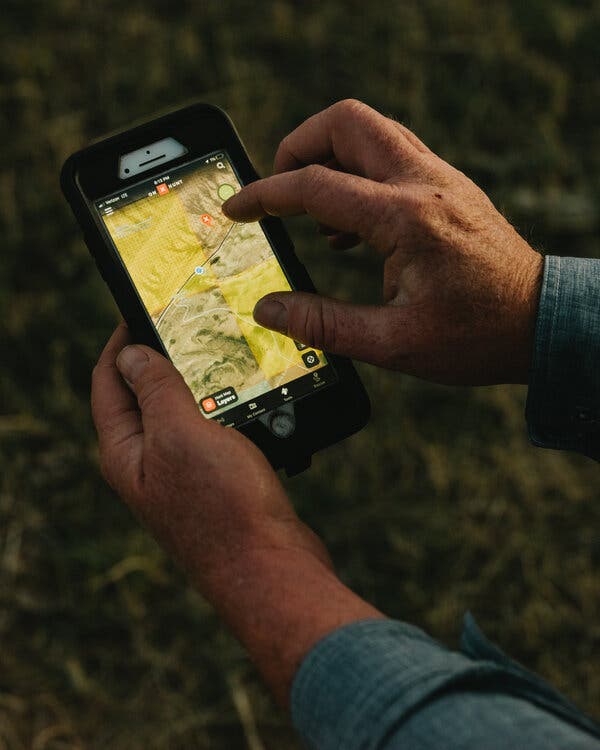
“A lot of people come to these things and they don’t even understand the language,” says Harry, a filmmaker who passes for the villain in the noisy yet skimpy new musical “KPOP.” “So what are they watching for?”
Good question.
For the record, the answer provided by Tiny, a member of a Korean pop group called RTMIS, is delivered, unlike a lot of the show, in English: “Perfection, Mr. Harry. OK?”
And it’s true that if you enjoy the precision-drilled dancing, meticulous melisma and auto-tuned sentiments that have turned K-pop into a worldwide sensation over the past 10 years, you are likely to be among those cheering the musical’s Broadway incarnation, which opened on Sunday at Circle in the Square.
But those who aren’t hard-core fans of the genre or don’t understand Korean — let alone those who saw the radically different and far superior Off Broadway version in 2017 — will have a harder time enjoying this one. For them, the musical is less an eye-opener than an ear-pounder, assiduously drowning out any ambitions it may once have had to be more.
It can’t be lost on the creative team that in adapting their Off Broadway hit for a bigger and more conventional audience they courted the same fate as their fictional counterparts. Both then and now, the book of “KPOP,” by Jason Kim, concerns the efforts of a Seoul hit factory to push its stable of custom-groomed artists into crossover success in the United States. To do so, they are willing to sacrifice almost anything.
That theme was given edgy, immersive expression in Teddy Bergman’s 2017 staging, produced by the experimental theater incubator Ars Nova in association with Ma-Yi Theater Company and Woodshed Collective. It imagined the audience as members of an itinerant focus group who, serving as emissaries of American taste, were led in small packs from space to space and given glimpses of what those sacrifices might mean.
If some seemed silly, others were trenchant; an especially disturbing encounter involved a plastic surgeon. But by the time everyone assembled in one last room for a concert-cum-party, the giddy fun of the bubble-gummy songs (by Helen Park and Max Vernon) felt earned — even if the reversal was dramatically perplexing. Were we now celebrating what the rest of the show had encouraged us to disparage?
That problem remains, with new ones added. To begin with, Bergman, directing again, faced an overwhelming difficulty in the fact that no Broadway theater could accommodate the immersive concept. Gabriel Hainer Evansohn’s set provides a partial solution: Instead of the audience moving, a tongue-shaped stage does, sliding back and forth bearing performers. And video screens mounted everywhere (Peter Nigrini is the projection designer) allow us to eavesdrop on the backstage action captured when Harry the filmmaker (Aubie Merrylees) goes rogue.
The narrative frame was rebuilt less successfully. The audience, no longer a focus group, merely watches as a K-pop impresario named Ruby (Jully Lee) prepares for a concert that will introduce her stable of acts to America. There are three of them: the five-woman RTMIS (pronounced Artemis), the eight-man F8 (pronounced fate) and the solo diva MwE (pronounced mu-WEE) — an orphan Ruby has raised, Mama Rose-style, for stardom.
MwE (played by the actual K-pop star Luna) has been reconfigured entirely. Her problem is no longer that she is aging out of pop credibility but that she wants creative freedom and a normal life with her boyfriend (Jinwoo Jung). Ruby ruthlessly tries to quash those dangerous ideas — love and creativity are not things a K-pop star can afford, she says — even as she complains about MwE’s failure to perform from the heart.
This is familiar material, thinly delivered, and so is the dissatisfaction of the members of RTMIS, which is so vague and hastily resolved I barely caught what it was. Only among the members of F8 does the conflict feel fresh and worthy of exploration in song: Its seven longtime members resent the “new kid,” Brad, brought in to juice their American rollout. Biracial and Connecticut-raised, Brad (Zachary Noah Piser) is seen by the others as inauthentic; he isn’t even fluent in Korean.
The songs, unfortunately, do not take up the challenge of investigating that issue, or any other. They are all diegetic — actual numbers performed by the characters — and are thus connected to the story, as in a jukebox musical, by only the feeblest of threads. When Brad tells the filmmaker that he grew up neither Korean enough for some nor American enough for others, and proceeds to sing a song called “Halfway,” we may expect an exploration of those feelings. But no, it’s a love ballad, addressed to a girl: “Can you meet me halfway, baby?”
The same problem derails “Korean Man,” a song for F8 that you may think from the setup will express their assertion of national pride. As we learn from the parts of it that are performed in English, though, it’s mostly about having the “baddest swagger” and “bein’ a bad, bad boy.”
With their link to the drama severed, and the drama in any case attenuated, the songs cease to function as they normally do in musical theater and collapse into a concert. That’s true even before the final 20 minutes of the show, when the filmmaker plot is summarily abandoned and, with it, any pretense of plot.
So that flashback scene in which Ruby tells MwE, at 13, that she’s a “disaster” with “tree trunk legs,” and a choreographer shouts that she’s shaming her parents? Forget about it. Come hear the band. (Actually, there are only three instrumentalists.)
By then, if you are not a fan, you may feel worn out by the aggressive mimicry of the K-pop performance style, not just in the mostly electronic arrangements but also in the minutely detailed choreography by Jennifer Weber, the squint-inducing lighting by Jiyoun Chang and the hundreds of can-you-top-this costumes by Clint Ramos and Sophia Choi. In that environment it’s hard to say whether Brad’s “Halfway” and MwE’s “Mute Bird” — acoustic songs simply staged and feelingly delivered — are actually lovely or merely a relief.
In its remaking for Broadway I wish “KPOP” had preserved more moments like that: moments that allow you to consider what the excitement of K-pop (for those who feel it) and the expressiveness of American musical theater (likewise) can profitably say to each other. Both have their fans and no doubt their glories, as well as their limitations. But it seems to me that in introducing the two, a good place to have met would have been, well, halfway. “KPOP” still has far to go to get there.
KPOP
At Circle in the Square, Manhattan; kpopbroadway.com. Running time: 2 hours 10 minutes.






















